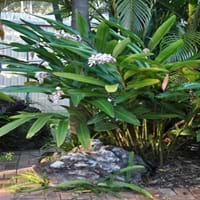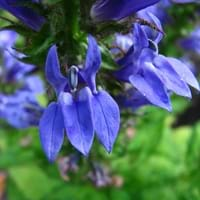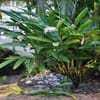Life Span
Perennial
Annual
Type
Tender Perennial
Flowering Plants, Shrubs
Origin
Southeastern Asia, India, Melanesia, Micronesia
America
Types
Variegata Dwarf, Variegata Chinese Beauty
Lobelia aberdarica, Lobelia leschenaultiana, Lobelia canbyi
Number of Varieties
Not Available
Habitat
Tropical regions
Open areas, River side, Woods
USDA Hardiness Zone
8-15
4-9
Sunset Zone
H1, H2, 14, 15, 16, 17, 18, 19, 20, 21, 22, 23, 24
A1, A2, A3, H1, H2, 1a, 1b, 2a, 2b, 3a, 3b, 4, 5, 6, 7, 8, 9, 10, 11, 12, 13, 14, 15, 16, 17, 18, 19, 20, 21, 22, 23, 24
Habit
Clump-Forming
Cushion/Mound-forming
Flower Color
White, Red, Light Pink
Blue, Red, Violet, White
Flower Color Modifier
Multi-Color
Bicolor
Fruit Color
Not Available
Not Available
Leaf Color in Spring
Dark Green
Dark Green
Leaf Color in Summer
Dark Green
Green
Leaf Color in Fall
Dark Green
Green
Leaf Color in Winter
Dark Green
Not Available
Leaf Shape
Lance shaped
Cushion
Plant Season
Spring, Summer, Fall, Winter
Fall, Summer
Sunlight
Partial Sun, Partial shade
Full Sun, Partial shade
Type of Soil
Loam, Sand
Well drained
The pH of Soil
Acidic, Neutral
Acidic
Soil Drainage
Average
Well drained
Bloom Time
Late Spring, Early Summer, Summer
Early Fall, Early Summer, Late Summer, Mid fall, Mid Spring
Tolerances
Drought
Not Available
Where to Plant?
Container, Ground, Pot
Container, Ground, Pot
How to Plant?
By dividing rhizomes, tubers
Seedlings
Plant Maintenance
Medium
Medium
Watering Requirements
Requires plenty of water during the growing season
Form a Soil ring to water efficiently, Prefer drip-irrigation instead of Over-head watering, Requires watering in the growing season, Use Mulches to help prevent water loss during hot and windy weather, Water twice a day in the initial period
In Summer
Lots of watering
Lots of watering
In Spring
Moderate
Moderate
In Winter
Average Water
Average Water
Soil pH
Acidic, Neutral
Acidic
Soil Type
Loam, Sand
Well drained
Soil Drainage Capacity
Average
Well drained
Sun Exposure
Partial Sun, Partial shade
Full Sun, Partial shade
Pruning
Cut off the flower stalks at the base of the plant, Remove dead leaves, Remove dead or diseased plant parts
Cut or pinch the stems, Prune after flowering, Prune to control growth, Remove dead or diseased plant parts, Remove deadheads
Fertilizers
Apply 8-4-6 amount
All-Purpose Liquid Fertilizer
Pests and Diseases
No serious insect or disease problems
Botrytis Blight, Crown rot, Pythium rot, Stem spot
Plant Tolerance
Drought
Drought
Flower Petal Number
Single
Single
Fragrant Bark/Stem
Yes
No
Foliage Texture
Coarse
Fine
Foliage Sheen
Glossy
Matte
Attracts
Butterflies, Not Available
Birds, Hummingbirds
Allergy
Rash
coma, convulsions, Diarrhea, exhaustion, Nausea, salivation, Vomiting, weakness
Aesthetic Uses
Showy Purposes
Beautification, Bouquets, Showy Purposes, Used for decorating walls, fences, gates, hedges, etc.
Beauty Benefits
Good for skin
Not Available
Environmental Uses
Air purification
Air purification
Medicinal Uses
Antiulcerogenic, Diuretic, Hypotensive
Asthma, Bronchitis, Croup
Part of Plant Used
Leaves, Rhizomes
Leaves, Seeds
Other Uses
Can be made into a herbal tea, Leaves used for wrapping zongi, Used to flavour noodles, Used to wrap mochi rice cakes
Showy Purposes
Used As Indoor Plant
Yes
Yes
Used As Outdoor Plant
Yes
Yes
Garden Design
Container, Cutflower, Mixed Border, Screening / Wind Break, Tropical
Bedding Plant, Bog Garden, Edging, Foundation, Hanging Basket, Houseplant, Mixed Border, Rock Garden / Wall
Botanical Name
ALPINIA zerumbet
Lobelia laxiflora
Common Name
Shell Ginger
Lobelia
In Hindi
Shell Ginger
Lobelia
In German
Shell Ginger
Lobelie
In French
Shell Ginger
Lobelia
In Spanish
Shell jengibre
Lobelia
In Greek
Shell Τζίντζερ
λοβηλία
In Portuguese
Shell Ginger
Lobélia
In Polish
Shell Imbir
Lobelia
In Latin
Crusta Ginger
Lobelia
Phylum
Magnoliophyta
Anthophyta
Class
Lilopsida
Dicotyledonae
Order
Zingiberales
Asterales
Family
Zingiberaceae
Campanulaceae
Clade
Angiosperms, Commelinids, Monocots
Angiosperms, Asterids, Eudicots
Tribe
Alpinieae
Not Available
Subfamily
Alpinioideae
Lobelioideae
Number of Species
Not Available
Importance of Shell Ginger and Lobelia
Want to have the most appropriate plant for your garden? You might want to know the importance of Shell Ginger and Lobelia. Basically, these two plants vary in many aspects. Compare Shell Ginger and Lobelia as they differ in many characteristics such as their life, care, benefits, facts, etc. Every gardener must at least have the slightest clue about the plants he wants to plant in his garden. Compare their benefits, which differ in many ways like facts and uses. The medicinal use of Shell Ginger is Antiulcerogenic, Diuretic and Hypotensive whereas of Lobelia is Asthma, Bronchitis and Croup. Shell Ginger has beauty benefits as follows: Good for skin while Lobelia has beauty benefits as follows: Good for skin.
Compare Facts of Shell Ginger vs Lobelia
How to choose the best garden plant for your garden depending upon its facts? Here garden plant comparison will help you to solve this query. Compare the facts of Shell Ginger vs Lobelia and know which one to choose. As garden plants have benefits and other uses, allergy is also a major drawback of plants for some people. Allergic reactions of Shell Ginger are Rash whereas of Lobelia have coma, convulsions, Diarrhea, exhaustion, Nausea, salivation, Vomiting and weakness respectively. Having a fruit bearing plant in your garden can be a plus point of your garden. Shell Ginger has no showy fruits and Lobelia has no showy fruits. Also Shell Ginger is not flowering and Lobelia is flowering. You can compare Shell Ginger and Lobelia facts and facts of other plants too.





